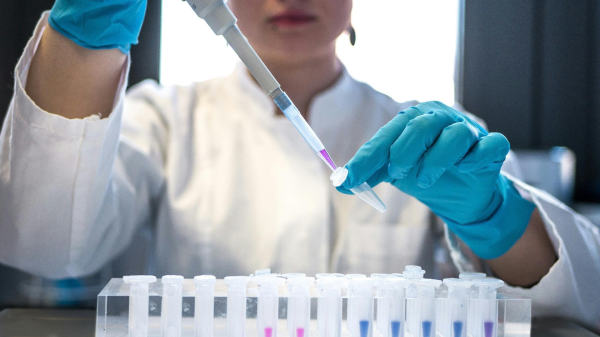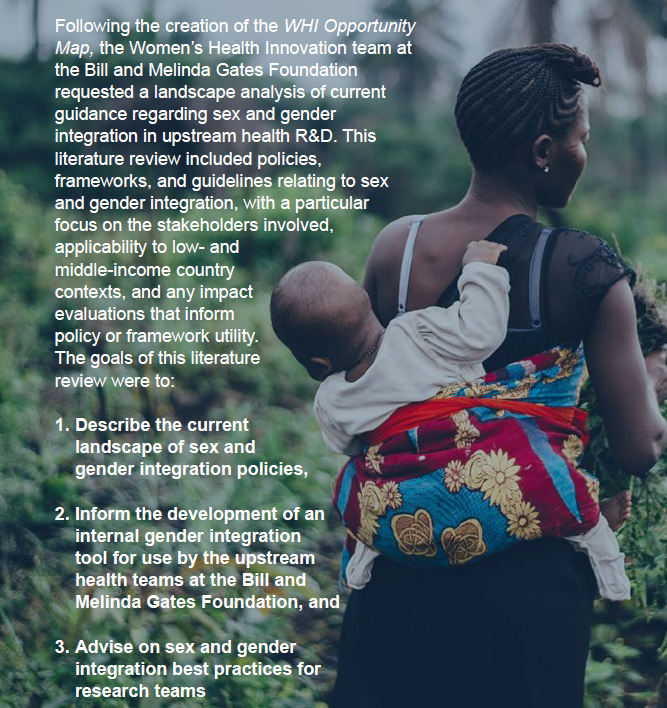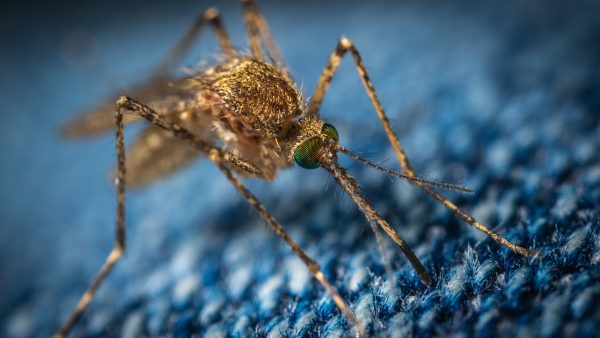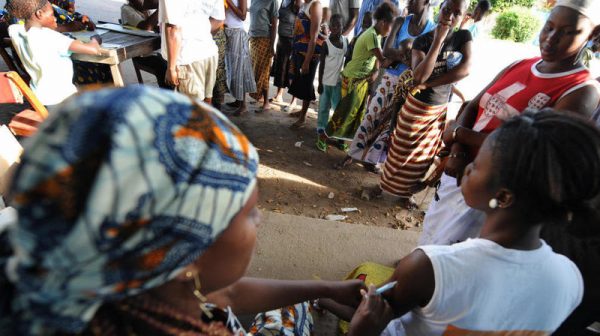
The Gates Foundation (GF) has forwarded a Gender Integration Marker to score investments based on their ability to be gender neutral, intentional, or transformative. The tool - based on the global development field and translated to the GF’s work – is most appropriate for downstream teams and strategies. It does not fit or work for upstream efforts. To address this gap and in response to feedback from various teams, the gender integration team is exploring how to integrate sex- and gender-considerations within upstream global health product development and research & development (R&D) portfolios. This has the dual objectives of 1.) improving gender integration outcomes within upstream health-focused teams (including creating tools/resources/guidance to support this effort), and 2.) translating ‘good’ or ‘promising' practice to influence the wider health R&D sector. The strategic vision is to close health disparities while closing the gender gaps that contribute to them. The current scope of this work covers the entire spectrum of discovery to market assessment and product introduction. This initiative will align and coordinate closely with the Women’s Health Innovations team – namely the WHI Opportunity Map recently released by the GF, NIH, and a large stakeholder group, and ongoing internal/external efforts to forward the reframing of ‘women’s health,’ especially in R&D.
The Women’s Health Innovation team is developing a gender integration marker that would be more specific to teams at the GF working in the upstream health research & development (R&D) space (including basic science, preclinical work, and clinical trials). They are also looking to provide detailed guidance on sex- and gender-integration for use by future grantees and research teams. The START team was tasked with reviewing peer-reviewed and grey literature to identify policies, frameworks, or guidelines related to sex- and gender-integration. The ultimate goal was to understand the current landscape of sex- and gender-integration, including key stakeholders, global applicability, summaries of current integration guidance, and any evidence of policy impact. Key guidance from each identified document was mapped to one of six key gaps identified by the Gates Foundation in the Women’s Health Innovation Opportunity Map.
 Following the literature review and data extraction, the START team developed a final presentation for the clients, outlining key data about the policy/guideline documents (e.g., stakeholder organization, global applicability, research stage, etc.) as well as summaries of sex- and gender-integration guidance for each WHI Opportunity. Exemplar frameworks were highlighted, and a section was included to outline four case studies on policy impact. The content from this presentation was also transformed into a narrative report with citations to provide the clients with relevant background and context for each section of the findings.
Following the literature review and data extraction, the START team developed a final presentation for the clients, outlining key data about the policy/guideline documents (e.g., stakeholder organization, global applicability, research stage, etc.) as well as summaries of sex- and gender-integration guidance for each WHI Opportunity. Exemplar frameworks were highlighted, and a section was included to outline four case studies on policy impact. The content from this presentation was also transformed into a narrative report with citations to provide the clients with relevant background and context for each section of the findings.
Final deliverables for this project are not able to be shared at this time.







